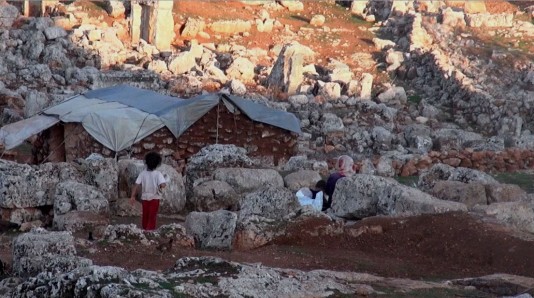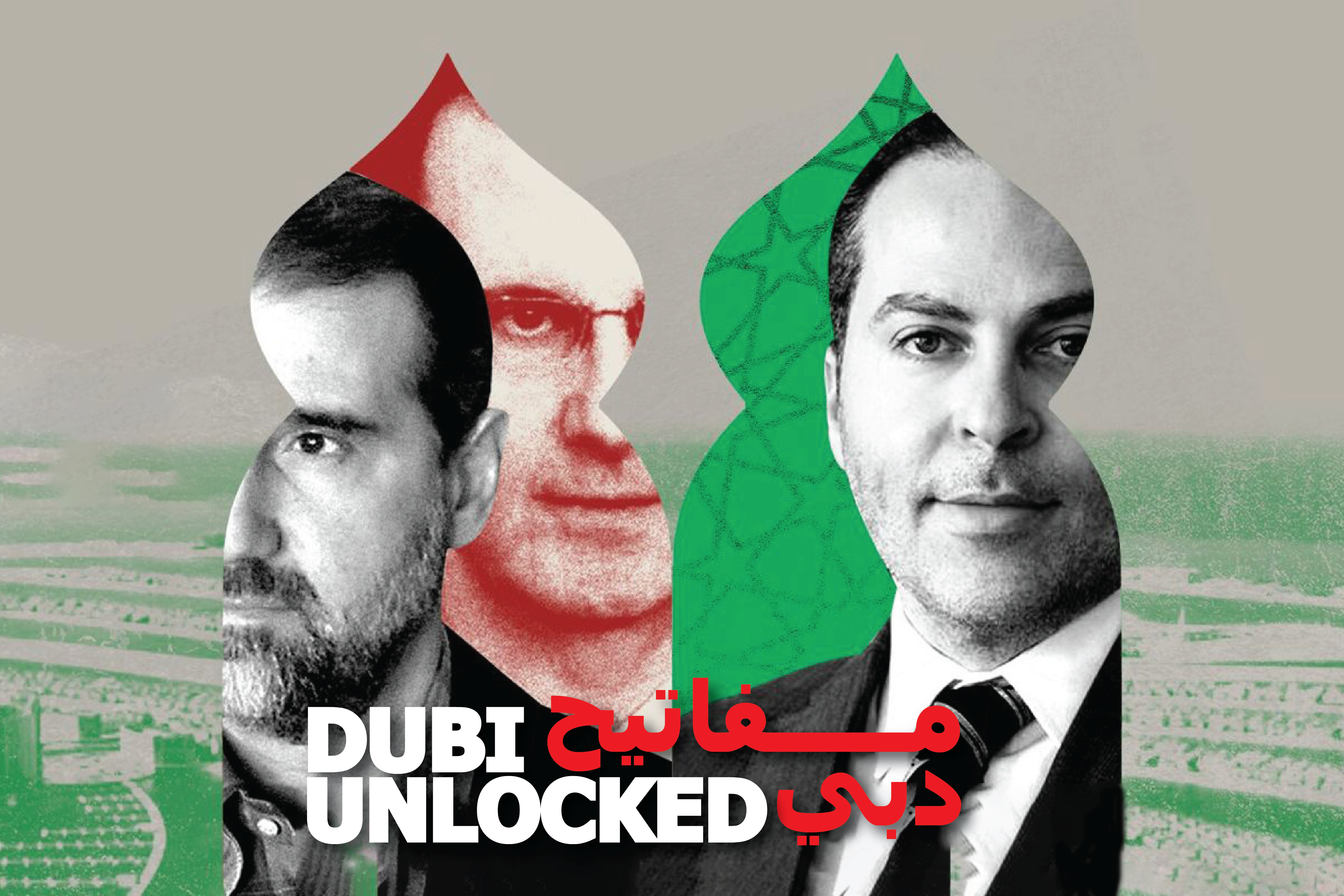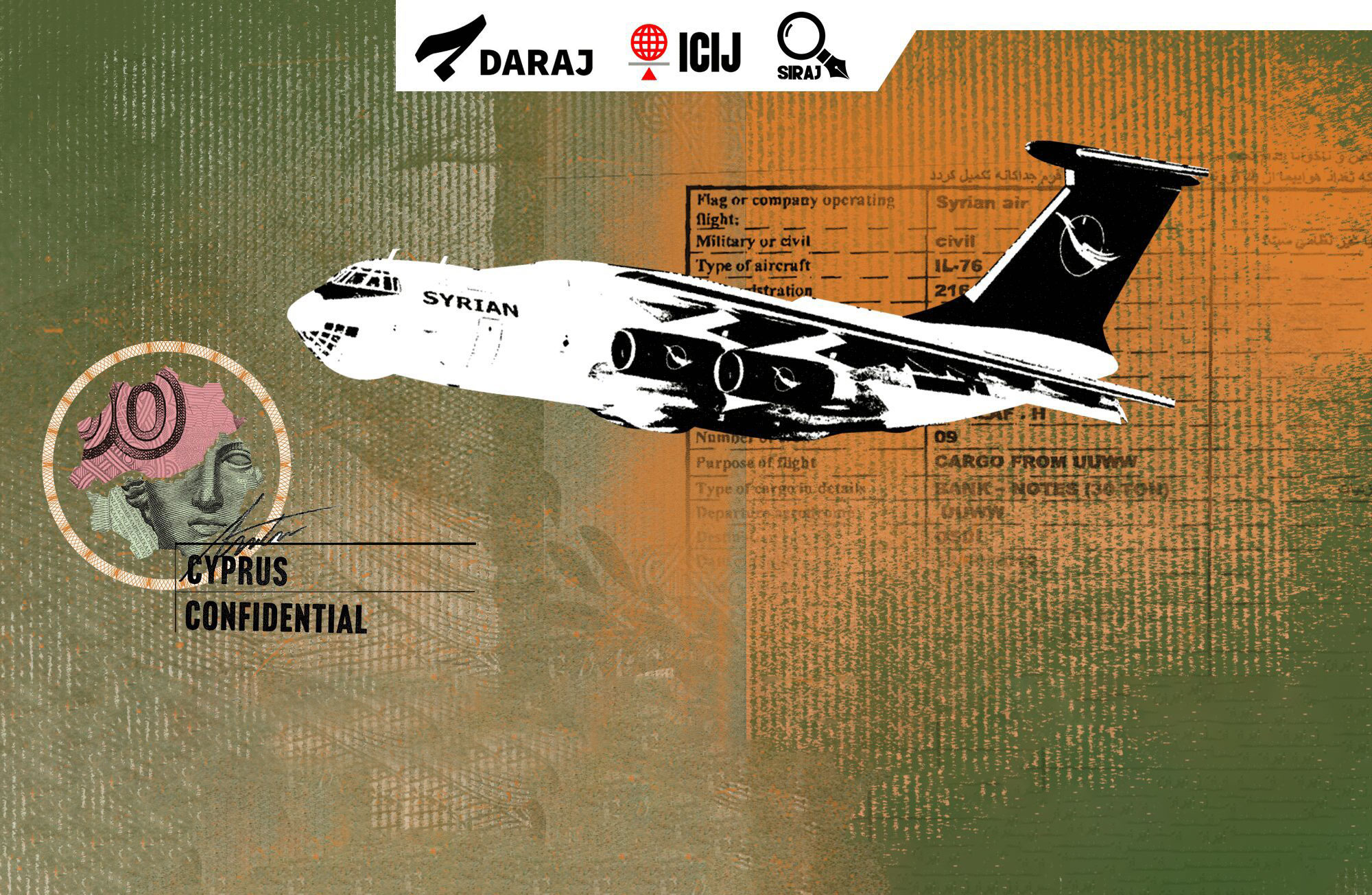Little blond Marah, 10, had no idea that the place of her future dreams and childhood games would be transferred. But the destruction of her home forced her and her family to seek refuge amidst archaeological ruins of the “forgotten or dead cities” – a string of 40 villages in north-western Syria.
Marah and her playmates jump over three ancient gravestones inside an old Roman burial site sculpted amongst the rocks in the area, once declared by UNESCO as a world heritage site. The graves are conical in shape, belonging to one of the wealthy families of that bygone era.
Today, the site, which provides a remarkable testimony to rural life in late Antiquity and during the Byzantine period, is no longer under state protection. It is threatened with destruction at the hands of 65 internally-displaced Syrian families who are living there.
The lively Marah lives within the boundaries of a magnificent palace in the ancient city of Serjilla that was erected during Roman times (2nd century). It has been reassembled to suit the needs of her family.
The site is considered one of the most important antiquity areas in the world, according to French scholar and historian Georges Tate, former director of the French Antiquity Expedition to Syria in the mid-1990s.
Marah’s family has altered the original palace, building cement walls to create new rooms before installing windows and doors. Most displaced families living there have followed suit, removing many of the old stones of these dwellings and using clay and mud to build new walls.
The remains of Bara and Serjilla and other ancient villages have become makeshift refugee camps, as documented by the two reporters.
Most of the monuments of this village have been damaged, including five ancient basilicas, seventeen castles and palaces and around one hundred mansions.
Serjilla In Serjilla, the newcomers have changed the architecture of the Roman baths and the first church, which has been divided into smaller rooms.
Plastic and tin sheets are used as temporary roofs to protect against rain and heat. Both reporters also documented how five ancient buildings within nearby agricultural lands were totally destroyed.
The alteration work by the new arrivals did not stop there. In one case, Roman baths are now housing barber shops, food stores and cafes.
After withstanding ravages of wars and earthquakes during the Roman and Byzantine periods, these violations have changed the appearance of many of these ancient cities, including temples, churches and the remains of monasteries. Such were the belligerences on ruins which had outlived the aggression of time from between the second and seventh centuries AD.
These displaced families have been forced to create new temporary communities because of the war at the expense of the Syrian cultural heritage and the memory of history.
The first palace in Serjilla, known for its large hall, was split into a living room and some bedrooms, says Abu Salem, the head of the family living there. Serjilla’s Aramaic church, well known for having survived the years, did not escape the atrocities; its walls were atrociously painted.
It has become the home of a family whose head and youngest daughter were killed as a result of a rocket fired by the Syrian regime. This tragedy forced the remaining family members to flee for their lives, says Um Rahaf, 50. She lives in the church with her family. “We used mud to stop the wind from penetrating through the stones and rocks so we can live here. We have no other choice.
We cannot go back to our homes which have been destroyed by rockets.” The reporters noted that wooden and iron door frames were created in places that did not exist while others were closed up with clay or cement to meet the needs of the inhabitants.
The family of Badee Aboud completely altered the look of the ruin they live in by building a new front entrance to the main road in the Shinshirah area. Al Bara…Destruction and Trade In the ancient village of Bara, the inhabitants destroyed the old royal tomb in order to sell it as antiquity pieces.
This tomb was well-known for its beauty and unique engravings; it is one of the most important royal tombs in the world, according to French archaeologist Georges Tate, who spoke of this in a series of studies presented at the University of Paris, the first of which was entitled “Forgotten Cities of Northern Syria.” The studies of this professor who specializes in the history of Syria and the Byzantine period documented that the rocks in these sites were used to build cement annexes.
He also noted the appropriated areas, which included the royal tombs, were recognized as an exceptional architectural feat that had maintained its appearance since ancient times. To this effect, the reporters have documented that graves within the royal pyramid have been irrevocably destroyed.
The Revolutionary Municipal Council Mamdouh Al Nassouh, head of the Bara local municipal council belonging to the temporary Syrian government told “Al Arabi Al Jadeed” newspaper that the council has taken note of a number of violations inflicted on Bara and Serjilla, including rocket attacks by the Syrian regime.
The two latter sites are administered by the Bara municipality. When asked by these reporters, the new comers said that they had nowhere else to go now after the destruction of their homes.
Some families have broken a number of the large rocks in the area close to Serjilla in an attempt to clear the land and plant vegetation. Shinshirah At the Shinshirah ruins, both reporters documented the changes to the terrain. Roads and paths leading to the refugee camp have been created amidst the antiquities.
Fortune hunters have also taken advantage of the situation, selling ancient rocks to raise funds that would allow them to build new houses there. In March 2013, UNESCO was forced to include these villages, in addition to five other locations in Syria, on the list of UN heritage sites facing the danger of extinction. Other sites on the list include Aleppo, Damascus, Busra, Tadmor and Saladin’s Castle.
An official from the AnNusra front says that when a transgression occurs the violators are warned not to repeat the offense. However, he says they are “unable to maintain a constant presence in the area. We do our best to stop the destruction”. Rami, 30, and his family, live in a house amongst the ruins after rockets destroyed his home in the Salam district in the village of Kafrooma, close to Ma’aret AnNuman/Idlib countryside.
Rami has taken over an old palace dating back to the Byzantine era and known as the “Monastery Palace”, turning it into a café for youth. This place is well known for its architectural beauty and for having retained its complete shape throughout the years as per old architectural plans.
Still worse, cooking, heating and boiling water with coal and wood is being carried out inside the antiquity buildings or beside them, creating cracks in the walls as a result of fires being lit nearby. Inhabitants of these world heritage sites also have no access to sanitation and sewage systems. They have no potable water for household use or even to bathe in. Hence, they rely on ground water they draw from Roman wells scattered amongst the rocks.
This endangers their health and puts the buildings in danger of collapse with poisonous elements seeping into the wells. Professor Fadi Al Abed, a local expert in ground water toxicity, said in an interview that “that untreated sewage contains poisonous elements such as sulphurs and nitrogen chlorides.
When these enter the soil it will take a long time for the land to be cleared of their effects”. Al Abed, who holds a master’s degree in analytical chemistry from the University of Aleppo, explains that untreated sewage water will seep into the soil in the area, home to a number of ground water wells as well as surface water. This affects the health of people who now reply on both these sources for drinking and cooking.This will lead to illnesses they are unable to combat at the moment. And it will induce cracks creating damage to walls of buildings amongst these ruins.”
Some of the inhabitants have abandoned the ground water wells and laid down water pipes connected to tanks, thereby creating a rudimentary water system to serve their needs. The digging has altered the scenery and caused damage to the ruins. With the lack of alternatives, the local municipal council is unable to stop the displaced persons from seeking refuge amongst the ruins or altering the sites by digging up tombs or ancient buildings.
Al Nassouh, head of the local council for both Bara and Serjilla complains: “We do not have the man power or the authority to prevent this nor do we have any committees overseeing these actions.” Former professor at the faculty of archaeology at Aleppo University, Waleed Saloum, lives close to these villages.
“Lighting fires amongst the ruins or in areas nearby will lead to major changes in the cultural heritage. The historic value of the ancient sites lies in its shape and the architecture of the period, and these fires can alter and destroy these antiquities.” The responsibility of the temporary Syrian government Dr. Taghreed Al Hijli, Minister of Culture in the temporary Syrian government says both the war and the inability to provide international protection are the main reasons behind the destruction of the cultural and historic heritage as well as the museums, which have been completely emptied.
Al Hijli adds: “there are complete areas that are threatened with extinction and destruction such as the columns in the historic city of Tadmor, in addition to the looting that took place in more than 15 thousand historic site.” In her interview with “Al Arabi Al Jadeed” newspaper she says: “The Syrian antiquities belong to everyone and they are part of the history of Syria, they have nothing to do with politics or the military; we have to protect and save these structures because history is merciless.
” During times of war the responsibility of the protection of antiquities lies with the governing authority, and in the case of these ancient villages, it is in the combined hands of AnNusra front and a number of groups opposing the Syrian regime. Confrontation with the AnNusra Front’s Sharia Court The reporters confronted officials at the Sharia court in Jabal Al Zawiya with findings of their investigation.
Abdul Mun’em Zeinedeen, the official in charge of the security office at the court responded: “When we report an abuse of the ancient sites we usually warn the residents not to repeat such an offense. However, we cannot be present at all times in these areas; we do our best to prevent the families from carrying out such attacks.” He also said: “There is a plan underway to educate the newcomers about the importance of such places and the need to preserve and protect our heritage, but the war forces such transgressions”.
He does not believe that this problem will stop “until the families can return to their villages and this will not happen until we bring down the current regime.” UNESCO: The biggest impact is from the war Nada Al Hasan, the representative of the Arab countries at the Paris-based UNESCO said in a Skype interview that Al Bara was the first site to be affected after the outbreak of the March 2011 revolution. Tanks belonging to the regime attacked these areas in pursuit of residents who took refuge there.
Another problem lies with the defacing of these monuments Al Hasan says:“When families seek refuge in these areas and build toilets and kitchens, this has a negative impact. However the biggest impact on such places is not from the people, but from the war itself.” She confirms that the UNESCO is holding talks with all the factions in order to try and turn these areas into neutral zones.
She adds that she is aware of the difficulty of negotiating with factions such as AnNusra front or sending expeditions to deal with these challenges in areas outside the control of the regime.
The UNESCO has reported that “due to the destruction and the tank attacks on these areas, and the presence of civilians, many of the antiquity sites have been damaged.” Through its offices in Beirut, the UNESCO has attempted to hold a workshop to train specialists and technicians on how to protect the sites that were wrecked as well as the museums and the antiquities.
However, residents of northern Syria were unable to travel to Beirut for security reasons. Al Hasan also says that UNESCO is studying “the possibility of involving the civilian population as well as the people and organizations in areas not under the jurisdiction of the Syrian regime to help them in protecting these sites.” She says: “We are concerned about the protection of the antiquities and in accordance with the Hague agreement and the special regulations on this matter, we have the authority to work with all the warring factions to protect the area.”
It is difficult to determine how much the restoration of these ruins in north-western Syria would cost and how long this will take. It is difficult to set a plan in motion because experts are unable to reach these areas to determine the damages incurred. Al Hasan complains that “some of the monuments cannot be restored especially when the damage is from airstrikes or wrecking”.
“The amount of damage and destruction in Syria is akin to that of World War Two and especially in Aleppo, Homs and Idlib”, according to Al Hasan. “ We need huge amounts of money in order to restore an area such as Al Bara.
We also need archaeologists and experts in the field of restoration because the work is very precise.” Safe sites suggested by UNESCO UNESCO hopes that the Syrian antiquities and heritage sites would be dealt with through three approaches. Asking the delegation of Mr. de Mistura, the UN special envoy for the Syrian crisis, to turn these areas into free of conflict or neutral zones. Approaching experts and training them on how to protect and preserve these locations. And having the Director-General of UNESCO ask the United Nations to inform and educate its members on the importance of the preservation of heritage.
People are more important than stones It took three years to turn these antiquity sites into camps for displaced persons. The dilemma continues, says one resident. “But at the end, people are more important than stones”. Transgressions and violations will continue especially if all concerned parties do not work on protecting this treasure in the absence of international and local organizations that should be protecting these locations. Meanwhile, the defacing and the damaging of these antiquities continues too, and what is taking place in Al Bara and Serjilla bears witness to this.
This investigation was carried out with the support of ARIJ Network (Arab Reporters for Investigative Journalism).




